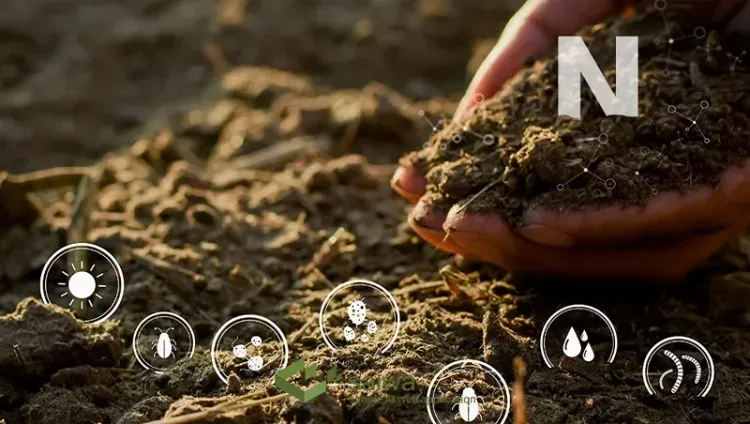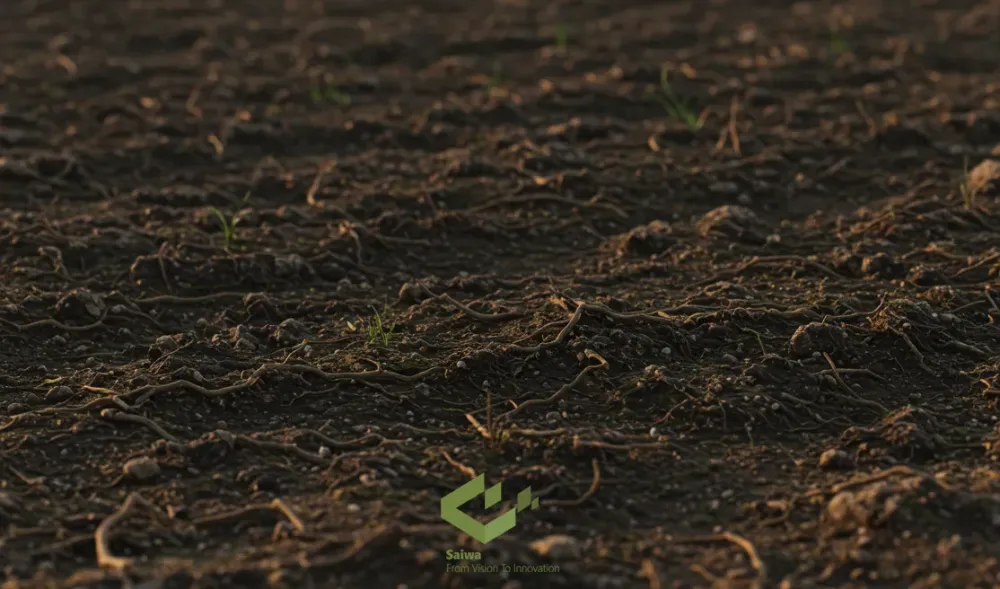Map Nitrogen Content: Enhancing Agricultural Efficiency with Precision Insights
Nitrogen is a vital nutrient that directly influences plant growth, crop
yield, and overall soil fertility. It is responsible for chlorophyll
production, which drives photosynthesis and allows plants to convert sunlight
into energy. However, nitrogen levels in soil are rarely uniform across a
field. Variations in soil type, moisture, and previous crop cycles often cause
uneven nutrient distribution. This inconsistency leads to overuse or underuse
of fertilizers, which can affect both crop health and environmental
sustainability. The ability to map nitrogen content has therefore become essential for
farmers who want to make data-driven decisions and optimize resource use.
The Importance of Mapping Nitrogen
Content
When farmers map nitrogen content across their fields, they gain detailed
insight into nutrient availability. This information helps them apply
fertilizers only where necessary, ensuring each section of the field receives
the right amount. As a result, they can increase yields, lower production
costs, and reduce harmful nitrogen runoff into nearby ecosystems.
Mapping nitrogen content is not just a way to monitor soil fertility; it
is a strategic approach to sustainable agriculture. With accurate nitrogen
maps, farmers can:
- Prevent nutrient deficiencies
that limit crop productivity.
- Minimize waste by avoiding
over-fertilization.
- Improve long-term soil health and
structure.
- Track seasonal changes in soil
nutrient dynamics.
By learning how to map nitrogen content effectively, agricultural
producers can achieve a balance between economic profitability and
environmental responsibility.
Methods Used to Map Nitrogen Content
Modern precision agriculture relies on multiple technologies to map
nitrogen content accurately. These methods combine soil sampling, remote
sensing, and data modeling to create detailed nitrogen distribution maps.
1. Soil Sampling and Laboratory Testing
Traditional soil sampling remains a foundational step to map nitrogen content.
Farmers collect soil from multiple points within the field, and laboratory
tests determine the nitrogen concentration in each sample. These results are
then used as reference data to calibrate digital models and validate satellite
or drone-based measurements.
2. Remote Sensing Technologies
Remote sensing enables farmers to map nitrogen content efficiently over large
areas. Cameras and sensors attached to drones or satellites capture spectral
images that reveal subtle differences in plant color, texture, and reflectance.
Healthy, nitrogen-rich plants tend to appear greener and reflect light
differently than nitrogen-deficient ones. Using these spectral patterns,
algorithms estimate nitrogen levels and generate maps that visualize nutrient
variation.
3. Geographic Information Systems (GIS)
GIS technology plays an important role in analyzing and visualizing nitrogen
data. It integrates multiple data sources such as soil samples, drone imagery,
and crop growth records to produce comprehensive nitrogen maps. GIS tools allow
farmers to overlay nitrogen data with other variables like soil pH, topography,
and moisture levels. This integration helps identify correlations and guides
targeted fertilizer management strategies.
4. Machine Learning and Predictive Models
Artificial intelligence and machine learning algorithms are increasingly used
to map nitrogen content. By analyzing large datasets, these models can predict
nitrogen levels based on historical and real-time information. Predictive
modeling not only saves time but also enhances the accuracy of nitrogen maps.
Farmers can anticipate deficiencies before they impact crop growth, improving
decision-making and reducing losses.
Benefits of Mapping Nitrogen Content
The advantages of mapping nitrogen content extend across all aspects of
crop management. Some of the key benefits include:
Improved Resource Efficiency
When farmers map nitrogen content, they can apply fertilizers precisely where
they are needed. This precision reduces fertilizer waste and ensures that
plants receive optimal nutrition without excessive chemical use.
Increased Crop Yields
Accurate nitrogen mapping leads to better nutrient distribution and healthier
plants. Balanced nitrogen availability enhances photosynthesis, accelerates
growth, and ultimately boosts yield.
Reduced Environmental Impact
Over-fertilization can lead to nitrogen leaching into groundwater and runoff
into nearby rivers or lakes. By mapping nitrogen content, farmers can control
fertilizer application, protecting both soil and water resources.
Data-Driven Decision Making
Mapping nitrogen content transforms how farmers approach nutrient management.
Rather than relying on assumptions, they can use precise data to make informed
choices. This transition from intuition-based farming to evidence-based
management supports long-term sustainability.
How to Implement Nitrogen Mapping on
the Farm
Implementing nitrogen mapping requires a structured approach. Farmers can
begin by identifying the specific goals of their nitrogen management program,
such as yield improvement or environmental protection. Once goals are defined,
they can choose the right combination of tools and techniques.
- Collect Baseline Data – Start by gathering soil
samples from different sections of the field. This step provides ground
truth data for calibration.
- Use Drone or Satellite Imaging – Capture high-resolution images
that reflect vegetation health and nitrogen levels.
- Integrate Data with GIS Tools – Combine imaging data with soil
test results to build accurate nitrogen distribution maps.
- Analyze and Adjust Fertilizer
Plans – Use the maps to adjust fertilizer application rates and monitor
changes over time.
By following these steps, farmers can continuously improve their ability
to map nitrogen content and maintain soil balance.
The Role of AI Platforms in Nitrogen
Mapping
Artificial intelligence has brought a new level of precision to nitrogen
mapping. Advanced platforms use computer vision, data analytics, and machine
learning to process large volumes of data quickly and accurately. These systems
analyze multispectral imagery, weather conditions, and crop growth stages to
produce real-time nitrogen maps.
AI-driven solutions make it easier to monitor changes in soil fertility
throughout the growing season. They also help detect nitrogen deficiencies
early, allowing corrective action before yield loss occurs. This proactive
approach ensures that crops receive optimal nutrition throughout their
lifecycle.
The Future of Nitrogen Mapping
As technology continues to evolve, the ability to map nitrogen content
will become even more accurate and accessible. Drones will capture
higher-resolution images, AI models will offer deeper insights, and soil
sensors will provide continuous monitoring. These innovations will allow
farmers to manage nutrients dynamically, adjusting fertilizer plans based on
real-time data.
In the future, nitrogen mapping will not only help improve yields but
also support global sustainability goals. Efficient nitrogen management reduces
greenhouse gas emissions, preserves soil quality, and ensures that agricultural
systems remain resilient against climate change.
Conclusion
Learning to map nitrogen content is one of the most impactful steps
farmers can take toward achieving precision, efficiency, and sustainability in
modern agriculture. By combining soil science with data analytics, farmers can
understand nutrient patterns better than ever before. Platforms like Saiwa are making this process easier,
faster, and more accurate, empowering the agricultural community to grow
smarter, greener, and more sustainably.





Comments
Post a Comment